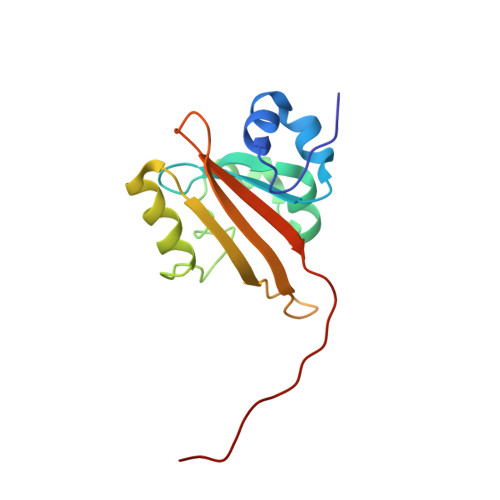NanoFAST: structure-based design of a small fluorogen-activating protein with only 98 amino acids.
Mineev, K.S., Goncharuk, S.A., Goncharuk, M.V., Povarova, N.V., Sokolov, A.I., Baleeva, N.S., Smirnov, A.Y., Myasnyanko, I.N., Ruchkin, D.A., Bukhdruker, S., Remeeva, A., Mishin, A., Borshchevskiy, V., Gordeliy, V., Arseniev, A.S., Gorbachev, D.A., Gavrikov, A.S., Mishin, A.S., Baranov, M.S.(2021) Chem Sci 12: 6719-6725
- PubMed: 34040747
- DOI: https://doi.org/10.1039/d1sc01454d
- Primary Citation of Related Structures:
7AV6, 7AVA, 7AVB - PubMed Abstract:
One of the essential characteristics of any tag used in bioscience and medical applications is its size. The larger the label, the more it may affect the studied object, and the more it may distort its behavior. In this paper, using NMR spectroscopy and X-ray crystallography, we have studied the structure of fluorogen-activating protein FAST both in the apo form and in complex with the fluorogen. We showed that significant change in the protein occurs upon interaction with the ligand. While the protein is completely ordered in the complex, its apo form is characterized by higher mobility and disordering of its N-terminus. We used structural information to design the shortened FAST (which we named nanoFAST) by truncating 26 N-terminal residues. Thus, we created the shortest genetically encoded tag among all known fluorescent and fluorogen-activating proteins, which is composed of only 98 amino acids.
Organizational Affiliation:
Institute of Bioorganic Chemistry, Russian Academy of Sciences Miklukho-Maklaya 16/10 117997 Moscow Russia baranovmikes@gmail.com.



















